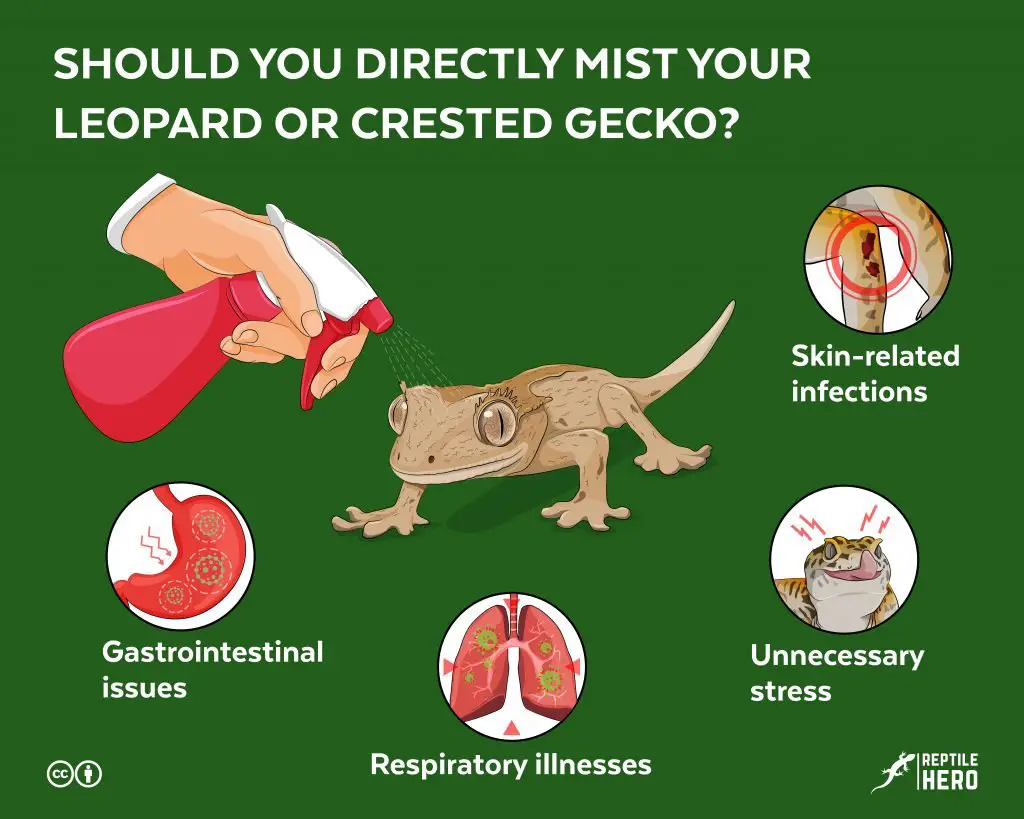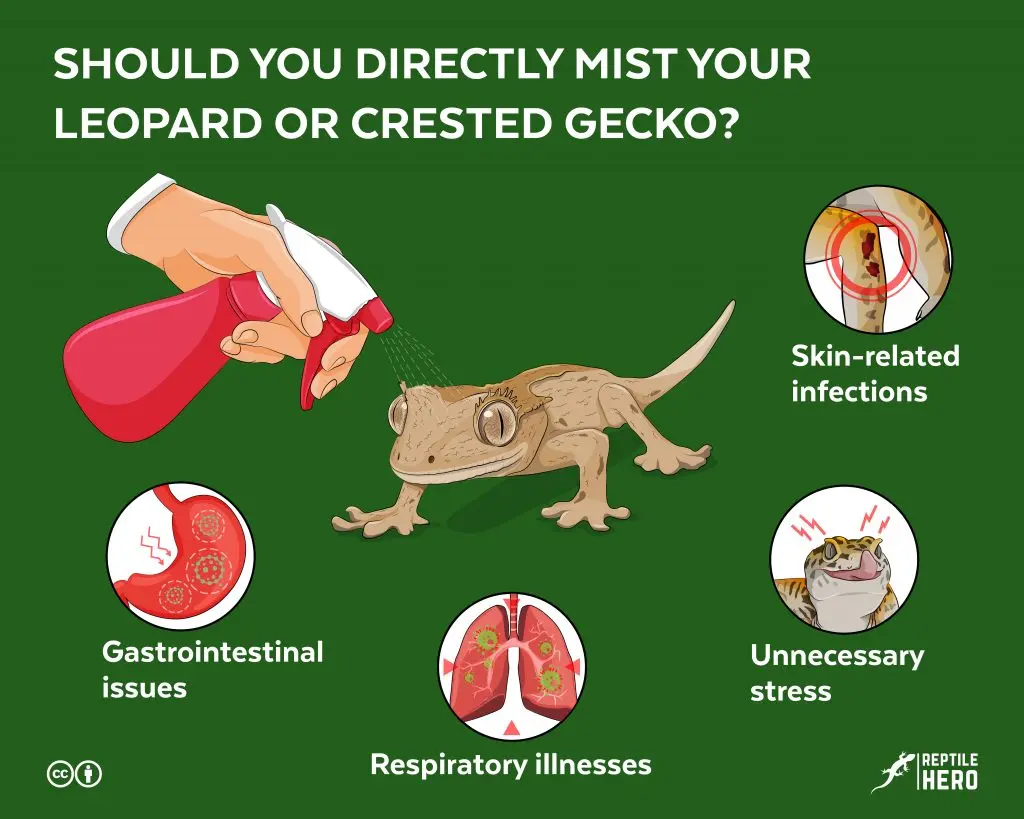Leopard geckos are fascinating creatures that have become increasingly popular as pets. As a responsible pet owner, it’s important to ensure that your gecko is healthy and comfortable in its environment. One question that often arises is whether or not to mist the enclosure. In this article, we will explore the benefits and drawbacks of misting your leopard gecko, and help you make an informed decision about what’s best for your pet.

Should I Mist My Leopard Gecko?
Leopard geckos are fascinating and adorable creatures that are a popular choice for many reptile enthusiasts. If you are a proud owner of a leopard gecko, you may be wondering whether or not you should mist them. In this article, we will explore the benefits and drawbacks of misting your leopard gecko to help you make an informed decision.
Benefits of Misting Your Leopard Gecko
Misting your leopard gecko can provide several benefits. Firstly, it can help to maintain the humidity levels in their enclosure. Leopard geckos need a relatively humid environment to thrive, and misting can help to ensure that their enclosure stays at the right level of humidity.
Secondly, misting can help to hydrate your leopard gecko. While leopard geckos do obtain some of their hydration from the food they eat, they also need access to fresh water. Misting can provide an additional source of hydration for your gecko and help to prevent dehydration.
Finally, misting can be a fun and stimulating activity for your leopard gecko. Many leopard geckos enjoy playing in the water and may even drink droplets off their skin. This can help to keep them entertained and engaged in their environment.
Drawbacks of Misting Your Leopard Gecko
While misting can provide several benefits, there are also some potential drawbacks to consider. Firstly, misting can make the substrate in your leopard gecko’s enclosure damp, which can create a breeding ground for bacteria and mold. This can be harmful to your gecko’s health and can lead to respiratory issues.
Secondly, misting can create excess humidity, which can lead to shedding issues. Leopard geckos require a certain level of humidity to shed properly, but if the humidity is too high, it can cause their skin to remain damp and lead to incomplete shedding.
Finally, misting can be stressful for some leopard geckos. If your gecko is not used to being misted or is particularly skittish, misting can cause them to become anxious or frightened. This can lead to health issues and a decreased quality of life for your gecko.
Misting vs Other Methods of Humidity Control
If you are concerned about the drawbacks of misting your leopard gecko, there are alternative methods of humidity control that you can consider. One popular option is to use a humidifier or a moisture-retaining substrate in your gecko’s enclosure. These methods can help to maintain the humidity levels without creating excess moisture that can lead to health issues.
Alternatively, you can provide a humid hide for your leopard gecko. A humid hide is a small enclosed area within the enclosure that is kept at a higher humidity level. This can provide a safe and controlled environment for your gecko to obtain the necessary humidity without the risks associated with misting.
Conclusion
In conclusion, misting your leopard gecko can provide several benefits, including maintaining the humidity levels, providing hydration, and stimulating your gecko. However, there are also potential drawbacks to consider, such as creating excess moisture and causing stress to your gecko. Ultimately, the decision of whether or not to mist your leopard gecko depends on your individual gecko’s needs and preferences. If you do decide to mist, be sure to do so in moderation and monitor your gecko’s health closely.
Frequently Asked Questions
Leopard geckos are fascinating creatures that are easy to care for, but many owners are unsure about whether or not to mist their pets. Here are some common questions and answers about misting leopard geckos.
Should I mist my leopard gecko?
Leopard geckos are native to dry environments, so they do not require high humidity levels. However, misting can be beneficial for shedding. Misting the enclosure once a week can help loosen any skin that is ready to shed, making the process easier for your gecko.
It is important to note that misting should not make the enclosure too damp. The substrate should never be wet to the touch, and excess water should be removed promptly. Too much humidity can lead to respiratory problems and other health issues.
How often should I mist my leopard gecko?
As mentioned before, misting once a week can be helpful for shedding. However, some owners may choose to mist more frequently if they notice their gecko struggling to shed. It is important to monitor the enclosure’s humidity levels and adjust misting frequency accordingly.
It is also important to note that misting should not be the only source of hydration for your leopard gecko. A shallow water dish should always be available in the enclosure, and the water should be changed daily.
What should I use to mist my leopard gecko?
When misting your leopard gecko, it is important to use clean, fresh water. Tap water can contain harmful chemicals, so it is best to use distilled or filtered water. You can use a spray bottle to mist the enclosure, but make sure to never spray directly on your gecko. Instead, mist a corner of the enclosure and allow your gecko to walk through it.
It is also important to clean the spray bottle regularly to prevent the growth of harmful bacteria.
What are the risks of misting my leopard gecko?
While misting can be beneficial for shedding, it can also be harmful if done incorrectly. If the enclosure is too damp, it can lead to respiratory problems and other health issues. Additionally, misting too frequently can create a humid environment that is not suitable for leopard geckos.
Misting also poses a risk of stress to your gecko. Some geckos may become frightened or anxious when sprayed with water, which can lead to health problems.
Are there any alternatives to misting?
If you are concerned about misting your leopard gecko, there are alternative methods for aiding shedding. Providing a humid hide, such as a plastic container with moistened paper towels, can create a humid environment without misting the entire enclosure. Soaking your gecko in a shallow dish of warm water can also help loosen any stubborn skin.
Ultimately, the best method for aiding shedding will depend on your gecko’s individual needs and preferences.
How NOT to Care for Leopard Geckos – Common Mistakes!
In conclusion, misting your leopard gecko can provide various benefits, but it is not necessary for their survival. While it can help them stay hydrated and maintain proper shedding, it is important to monitor humidity levels and avoid over-misting to prevent respiratory infections.
If you do choose to mist your leopard gecko, make sure to use clean, filtered water and avoid spraying directly on them to prevent stress. Providing a humid hide and a balanced diet can also contribute to their overall health and wellbeing.
Ultimately, the decision to mist your leopard gecko is up to you and your individual pet’s needs. By understanding the potential benefits and risks, you can make an informed choice and provide the best possible care for your beloved gecko.

